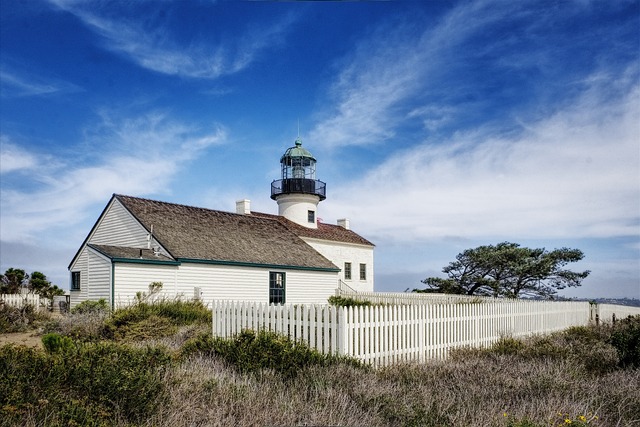DIY Fence Installation: A Comprehensive Guide for New Bedford Homeowners
Are you considering a DIY fence installation for your New Bedford, Massachusetts property? This comprehensive guide offers valuable insights to make the process a success. From selecting the perfect fence style to mastering the art of installation, we’ll walk you through each step. We’ll explore various fence options tailored to New Bedford yards, ensuring both functionality and aesthetic appeal. Get ready to transform your outdoor space with expert tips on tools, planning, digging postholes, and final touches for a long-lasting, stunning fence.
- Understanding Your Fence Options for New Bedford Yards
- Measuring and Planning Your Fence Layout Effectively
- Tools and Materials Required for a Successful Installation
- Step-by-Step Guide to Digging Post Holes
- Attaching Fence Panels and Railings Securely
- Final Touches: Painting and Maintenance Tips
Understanding Your Fence Options for New Bedford Yards
When it comes to fencing your New Bedford, Massachusetts yard, homeowners have a variety of options to consider. The first step is evaluating your specific needs and preferences, such as privacy, security, or aesthetic appeal. Wood fences offer classic charm and can be customized with different styles and finishes, while vinyl fences are low-maintenance and highly durable. Chain link fences provide both security and visibility, making them ideal for active families or those who need extra protection. Before you start your DIY fence installation project, research local building codes to ensure compliance and consider factors like climate, soil conditions, and nearby plants to choose the best type for your New Bedford yard.
Measuring and Planning Your Fence Layout Effectively
When planning your DIY fence installation, meticulous measuring and thoughtful layout are key to success. Start by thoroughly inspecting your property boundary and identifying where you want your fence to be located. Use a tape measure to take precise dimensions, considering both straight runs and any corners or curves in your yard. Create a detailed plan, sketching out the fence’s path and noting gates or openings you may need. This step is crucial as it ensures your fence not only looks aesthetically pleasing but also fits seamlessly into your New Bedford, Massachusetts property lines.
A well-planned layout will make installation easier and more efficient. By considering factors like nearby structures, trees, or other obstacles early on, you can avoid unexpected challenges later. Regularly refer to your plan throughout the project for consistent guidance.
Tools and Materials Required for a Successful Installation
For a successful DIY fence installation, New Bedford homeowners should gather the necessary tools and materials before beginning. This includes measuring tape, a level, post-hole digger or auger, concrete mix, rebar, wooden posts, fencing panels (wooden, vinyl, or metal), brackets, hardware like screws and nails, and protective gear such as gloves and safety glasses. Ensure your fence design aligns with local building codes to avoid any legal complications.
When equipping yourself for the task, consider renting tools if you lack them, especially heavier machinery like an auger. Quality materials will ensure longevity and aesthetic appeal. Plan your layout accurately, marking post locations with stakes and string to maintain straight lines and consistent heights. This preparation is crucial for a neat, durable fence that enhances your property’s value.
Step-by-Step Guide to Digging Post Holes
Before installing your fence, digging post holes is a crucial step. Begin by marking the location where each post will be placed, ensuring it aligns with your fence design and building code requirements. Next, use a post-hole digger or an excavator to create the holes. The depth of the holes should match the length of the fence posts plus a few extra inches for stability. For most residential fences, holes around 3 feet deep are standard. Regularly check local regulations regarding excavation depth and any utility lines that might be buried in your area before beginning digging.
Once the holes are dug, measure the dimensions to ensure they meet the specifications for your posts. This step is critical for ensuring a sturdy fence structure. If needed, use a level to ensure the holes are horizontally aligned, as this will contribute to the overall stability of the fence. After confirming the holes’ readiness, you can proceed with setting and securing the fence posts in place.
Attaching Fence Panels and Railings Securely
When attaching fence panels to the posts, make sure each panel is securely fastened with brackets or nails. Start by aligning the panel with the post and marking the placement of the brackets or nails. Use a drill to create pilot holes, then insert brackets or secure the nails tightly. Repeat this process along the length of the fence. For railings, follow similar steps but ensure they are angled correctly for safety and stability. Check local building codes to understand required railing heights and spacing.
Final Touches: Painting and Maintenance Tips
After completing the fence installation, the final touches involve painting and regular maintenance to ensure longevity. Start by cleaning the fence thoroughly, removing any debris or dirt using a pressure washer or brush. This step is crucial as it prepares the surface for paint, allowing for better adhesion.
Choose a high-quality exterior paint suitable for wood fences, considering color options that complement your home’s aesthetics. Apply the paint evenly using a brush or roller, following the manufacturer’s instructions for drying times. Regular maintenance includes periodic cleaning and re-painting to protect against weather changes and prolong the fence’s lifespan.
